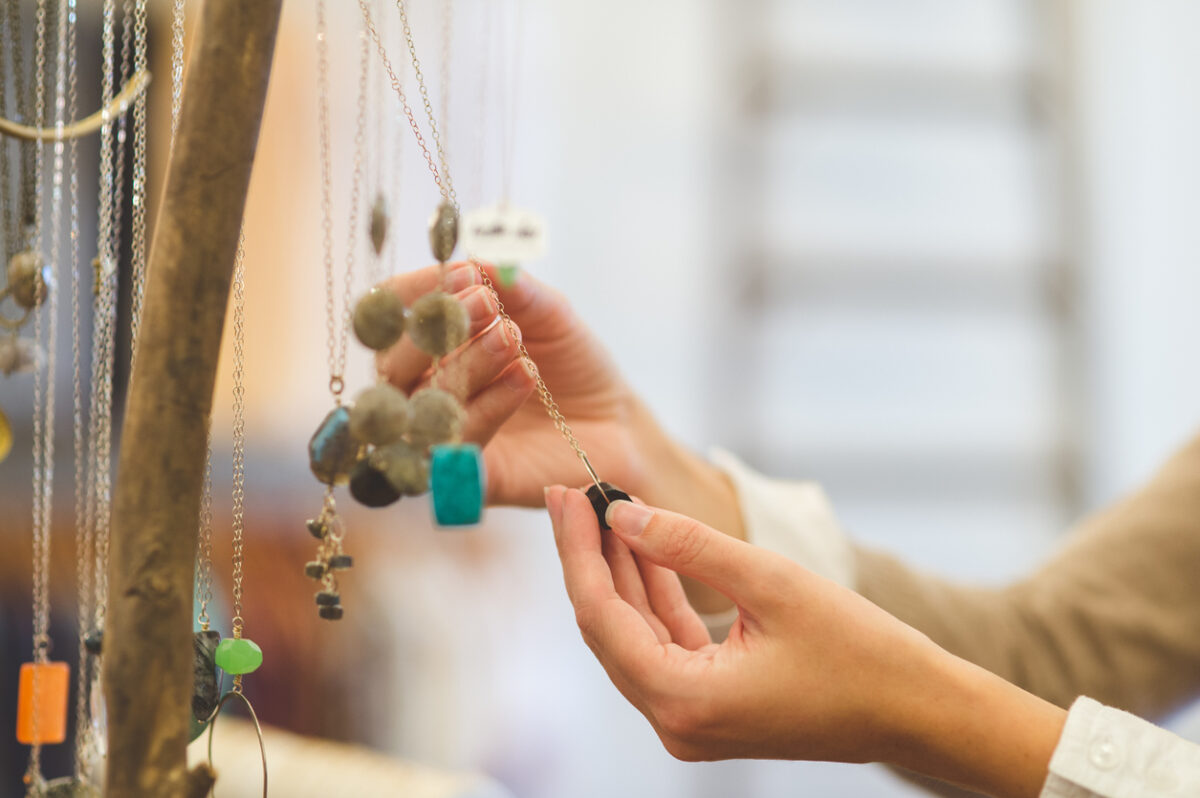Finding wholesale quality jewelry styles is key to growing your business. Here are helpful tips to keep in mind.
Revenues in the jewelry industry are over 55 billion today and are expected to grow yearly. Your boutique can be a successful jewelry retailer if you implement specific steps. One of the most important is to find what your customers want.
Below are tips that have proven to help other retailers succeed in selling wholesale jewelry.
Define Your Jewelry Brand
Successful jewelry retailers understand their brand and how it translates into the jewelry market. You likely won’t see high-end wedding jewelry retailers selling athletic jewelry for kids. You won’t see artisan-made jewelry right next to mass-produced, low-quality jewelry.
Think of your brand as a direct reflection of your boutique and what you promise to deliver to your customers. The jewelry you sell represents your mission and vision. It must reflect the adjectives you use to define your brand, such as quality, classic, trendy, high-end, fun, luxury, affordable, etc.
Once you understand your brand, you can turn your focus to customers.
Define Your Customer
Whether you think about current customers or ones you have yet to target, describe the many characteristics of those for whom you will be purchasing jewelry. When defining your customer, include age, gender, career, income level, marital status, if they have children and any other trait that can help you narrow your customer target.
Of course, you cannot know everything about every customer. You don’t even want to know that much about each customer. However, creating the optimal customer base can help you choose the right jewelry to sell.
Define Your Customer’s Lifestyle
You may not think a person’s lifestyle can help you with wholesale jewelry purchases, but it can. What is important to them in their personal lives is an indication of what items they like to buy, especially when it comes to jewelry.
A soccer mom that spends most of her spare time at kids’ games may prefer sporty, durable jewelry. A religious or spiritual customer may prefer jewelry that reflects their faith.
Answer questions like:
- Where do they live in the city or out in the country?
- Do they have old money, new money, or no money?
- Do they emulate celebrities or strive to be different?
- What are their hobbies or favorite topics of interest?
Define Your Customer’s Shopping Profile
Customers shop for many different reasons. Some may be shopping for a special event, a gift for a friend, or to show off. Other customers may want a sentimental piece of jewelry that will be handed down to family for generations. Some want an item they can donate to Goodwill after a few uses.
Reports suggest there are eight shopping profile characteristics to consider. Quotes you may hear that represent the different profiles include:
- Bargain Hunter – “Do you have any sales going on?”
- Browser – “I’m just looking, thank you.”
- Showrooming – “I’m just looking; I’ll buy online if I decide to get it.”
- Impulsive- “I might as well buy this too.”
- Mission-Oriented- “I need to get these items on my list.”
- Indecisive- “I just can’t decide which one to get.”
- Educated – “I read the reviews for this item online.”
- Loyal – “I’m back. What’s new in the store?”
Define How to Find Your Customer
Every type of customer can be found if you know where they are hanging out. Defining how to find your target customer is crucial when selling wholesale jewelry. You must know the right place to market your boutique. For example, you can’t target twenty-somethings at a nursing home.
You must find ways to capture target customers through online and offline advertising.
Is Your Target Customer Online?
Research social media platform data before you pay for ads. This year, Facebook has nearly 3 billion subscribers. The largest group is males (57%) and females (43%) between the ages of 25 and 34.
Twitter and Instagram also show males spending more time on the platform than females, with the largest age group being between 28 and 35. TikTok, on the other hand, has 1 billion users, with the largest age group being between 10 and 19, and females (61%) spending more time online than males.
LinkedIn, Snapchat, Pinterest, and YouTube are other social media platforms worth researching to find your target audience online. Also, research can tell you if your customer prefers ads, live streams, photos, or videos.
Is Your Target Customer Offline?
Offline advertising must be creative enough to capture your customer’s attention in a world with many distractions. Generational marketing must be a factor. Examples include the following:
- Use nostalgia that brings back happy memories in newspaper advertisements (baby boomers)
- Email a thank-you note with a coupon after their first purchase (Millennial)
- Join a local cause important to your target customer (Gen Z)
- Collaborate with other businesses that your customers favor (Gen X)
If your customers believe in education, host a lunch, and learn event. If your customers are big on finding discounts, send digital coupons. If they are all about family activities, collaborate with a local family entertainment business. Once you start thinking outside the advertising box, you will develop numerous creative ways to target customers.
Know the Numbers and Adapt
Recent research shows most Americans prefer shopping for jewelry at a retailer. They like seeing it and trying it on before buying; others like shopping online. Your boutique can benefit from offering both avenues. Develop a simple APP where customers can view and learn more about or purchase products.
The research found that 41% of jewelry buyers prefer to stay with one brand when making major jewelry purchases. Your brand can gain this type of loyalty too. Over 70% of respondents say they return to certain retailers because they are offered discounts or rewards. Incorporate this into your marketing plan.
Takeaway
Once you complete the processes above, you will better understand the quality jewelry styles to resell in your boutique. Then you can shift your focus to finding a wholesale jewelry supplier. Together, you can create a plan to meet customer demand successfully.








No Comments